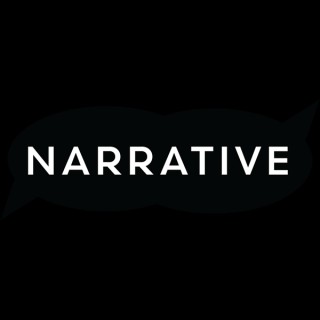South Carolina from A to Z
Follow South Carolina from A to ZHistorian and author Walter Edgar mines the riches of the South Carolina Encyclopedia to bring you South Carolina from A to Z. Produced by South Carolina Public Radio.
- Jan 2, 2026 LATEST EPISODE
- weekdays NEW EPISODES
- 1m AVG DURATION
- 1,315 EPISODES
More podcasts from Alfred Turner
Latest episodes from South Carolina from A to Z

“H” is for Howard, Frank James (1909-1996). Football coach. Howard brought attention to the Clemson football program as much as with his colorful, entertaining personality as with his victories.

“G” is for Greer (Greenville County; 2020 population 35,316).

“G” is for Greenwood County (456 square miles; 2020 population 71,074).

“G” is for Greenwood (Greenwood County; 2020 population 23,356).

“C “is for Clemson University. In 1888 Thomas G. Clemson left his Fort Hill property and an endowment to the state in order to create a separate agricultural college.

“M” is for Mount Dearborn Armory. Situated on an island in the Catawba River in Chester County, Mount Dearborn was initially conceived and selected by President George Washington to be one of the nation's three national arsenal-armories.

“G” is for Grimké, Sarah Moore (1792-1873), and Angelina Emily Grimké (1805-1879).
“G” is for Grimké, Sarah Moore (1792-1873), and Angelina Emily Grimké (1805-1879). Abolitionists.

“C” is for Columbia, burning of (February 17-18, 1865)

“C” is for Columbia (Richland County: 2020 population 136,632). Named for Christopher Columbus and created in 1786 as the nation's first truly planned capital city, Columbia has a unique history that took shape in the wilderness near the geographic center of South Carolina.

“R” is for Rutledge, John (ca.1739-1800). Lawyer, jurist, governor.

“P” is for Port Royal, Battle of (November 7, 1861). The Battle of Port Royal culminated an amphibious operation designed to establish a United States military depot on the islands on the southeastern coast to carry out land and sea operations against the Confederacy.

“M” is for Moultrie flag. "This was the first American flag which was displayed in South Carolina.”

“M” is for Moultrie, William (1730-1805). Soldier, governor.

“M “is for Moultrie, John, Jr. (1729-1798). Physician, planter, political leader.

“H” is for Hurricanes. The term “hurricane” comes from the West Indian word “huracan” which means “big wind” and is used to describe severe tropical cyclones in the Atlantic Ocean, Gulf of Mexico, Caribbean Sea and the eastern Pacific Ocean.

“G is for Grimké, John Faucheraud (1752-1819). Legislator, jurist.

“C” is for Colonoware. On historic-period sites in South Carolina, archaeologists often find locally made, hand-built, unglazed pottery that was fired in open hearths rather than kilns. This broad class of pottery has been termed colonoware.

“C” is for colonial agents. The overseas market for rice, South Carolina ‘s principal export was restricted by Parliamentary legislation. How could South Carolina get parliament to pay attention to its particular concerns? The answer was a colonial agent.

“C” is for Colleton County (1,056 square miles; 2020 population 38,604).

“B” is for Boyce, Ker (1787-1854). Merchant, bank president.

“D” is for Drayton, John (1766-1822). Governor, jurist, author. Although he had a distinguished political career, Drayton is most remembered for his achievements as a writer and a botanist.

“C” is for Chesnut, James, Jr. (1815-1885). U.S. Senator, soldier.

“C” is for Cherokees. The Cherokees were one of the largest southeastern Native American nations with which South Carolina colonists had contact.

“B” is for Blackbeard (d. 1718). Pirate. Most commonly known today as Edward Teach, Blackbeard surfaced in Jamaica in mid-1717. In eighteen months he carved an extraordinarily successful career as a pirate, creating an indelible image of “the fiercest pirate of them all” and making him a global icon.

“W” is for Willington Academy. The Willington Academy of Doctor Moses Waddel, a log-constructed classical school for boys, was perhaps the most prestigious preparatory school in antebellum South Carolina.

"S” is for Sothel, Seth (d. 1694). Proprietory, governor.

“S” is for Sonoco. This Hartsville-based international packaging manufacturer had its beginnings in the late nineteenth century.

“S” is for Snowden, Mary Amarinthia (1819-1898). Philanthropist.

“S” is for Smyth, Thomas (1808-1873). Clergyman, author.

“S” is for Smyth, Ellison Adger (1847-1942). Industrialist.

“S” is for Smith, William Loughton (1758 to 1812). Lawyer, congressman, diplomat.

“S” is for Smith, William (ca. 1762-1840). U. S. senator.

“S” is for Smith, Thomas (ca. 1648-1694). Governor.

“R” is for Rutledge, Edward (1749-1800). Lawyer, governor.

“P” is for Port Royal (Beaufort County, 2020 population 14,516).

“M” is for Moultrie, John (ca.1699-1771). Physician.

“M “is for Moultrie, James, Jr. (1793-1869). Physician, medical educator.

“M” is for Motte, Rebecca Brewton (1737-1815). Revolutionary War heroine.

“M” is for Moses, Ottolengui Aaron (1846-1906). Chemist, geologist, inventor.

“M “is for Moses, Franklin J., Jr. (ca.1840 to 1906). Governor.

“M” is for Morton, Joseph, Sr. (ca.1630-1688). Governor.

“L” is for Lunz, George Robert, Jr. (1909-1969). Museum curator, marine biologist.

“H” is for Hunter-Gault, Charlayne (b.1942). Journalist, civil rights activist.

“G” is for Gridley, Mary Putnam (1850-1939). Civic leader, businesswoman.















